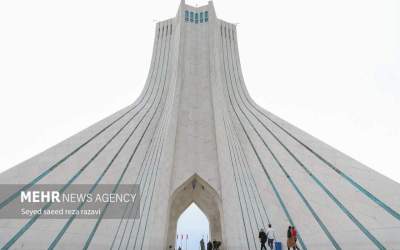Wednesday 16 November 2016 - 15:49
Story Code : 239466
The overblown fear of Iranian state-owned enterprise
Bourse and Bazaar|Esfandyar Batmanghelidj: When the first IPC contract was awarded to Setad, an entity with ties to Iran�s Supreme Leader, critics of the nuclear deal saw confirmation of their worst fears. In their view, sanctions relief was always bound to enrich elements in the Iranian state, fueling conflict in the region.
As scholar Alex Vataka writes in a recent piece for Foreign Affairs, the awarding of the IPC contract was a concession by the Rouhani administration to a wave of pushback by the extensive military-industrial complex mostly controlled by the Iran Revolutionary Guard Corps (IRGC). As Vatanka argues, the Rouhani administration is engaged in the �thorny process� of �compromising and whenever possible co-opting the political and economic interests of the hardliners.�
This �thorny process� is part of the larger effort of privatization in the Iranian economy, to which the Rouhani administration is vocally committed. As such, it is important to not see politically-necessary compromises as failures. On the contrary, slowly undoing the grip of Iran�s military-industrial complex on the economy requires a much more nuanced understanding of state-owned enterprise, not just by the Iranian stakeholders, but also by Western business leaders and policy makers.
Since Implementation Day, there has been little effort to examine the actual mechanics of business on the ground in Iran, particularly between Western multinationals and state- owned enterprises (SOEs). One of the few assessments is a recent report by the Foundation for Defense of Democracies (FDD), a think tank which opposed the Iran Deal. The FDD report offers an attempt to unpack the role of the IRGC in Iran�s economy in a detailed manner, looking at the history of actual acquisitions in Iran. In line with FDD�s advocacy, the report is skeptical of Iran�s capacity for reform:
Even as Iran welcomes forging strategic trading ties � inviting foreign capital and technological investment to enhance Iran�s export capabilities � it ultimately subordinates these openings to national security and foreign policy goals. The IRGC is the guarantor of this objective.
While the report ends with the expected call for additional sanctions, it remains a good case study in how a convoluted and stubborn understanding of the IRGC has been crafted in Washington, impacting how US policy is applied towards Iran�s economic recovery.
Part of the Western reaction to state ownership in the Iranian economy is a product of the neoliberal mindset. Beginning in the 1970's, Western governments spent four decades slowly untangling the state from the economy. Policymakers and business leaders in the West tend to see state-ownership in their own countries as not only undesirable, but also economically and socially irresponsible. This is particularly true in the United States, where state-owned enterprise is essentially non-existent.
American observers of Iran would do well to consider that mechanisms of political economy are complex. Ownership is easily conflated with the idea of control, but ownership is just one mechanism by which a state can influence the decision-making of commercial actors. Looking to the United States, some of the country�s largest employers, such as publicly-traded firms Boeing and Lockheed Martin, are hugely dependent on federal budgets and underlying political decisions. National security posture is equally as consequential to the economic well-being of households in an industrial city such as Everett, Washington as it is in Karaj, Iran.
In Europe, the connections between commerce and the state persist, reminding us that state ownership was once the economic norm. The push for privatization in Europe, a politically-fraught process, did not begin in earnest until the 1980's.�It wasn�t until 1998 that Europe saw the total annual value of privatizations peak. Today, European governments retain significant ownership in their countries' major multinational corporations. For example, France has ownership in EDF and Airbus, Germany in Volkswagen and Deutsche Telekom, and Italy in Enel and Eni. It is also worth considering that while central government control of companies in Europe has declined, it persists at local levels. Today, only a handful of enterprises in Germany are controlled by the federal state, but according to PWC, nearly 15,000 companies are owned by local municipalities, a form of state ownership that goes unconsidered.
Overall, the 34 OECD countries boast 2,111 fully or majority-owned state-owned enterprises (SOEs) valued at USD $2.2 trillion dollars. Looking at basic averages, this is equivalent to 62 majority-owned SOEs per country with an average total value of USD $64 billion dollars. By way of comparison, the FDD report identifies �at least 229 companies with significant IRGC influence, either through equity shares or positions on the board of directors.� This figure includes firms in which the IRGC does not have a majority stake. Whether or not it is precise, there is no doubt that the IRGC owns some of Iran�s largest conglomerates, and it is widely agreed that the military-industrial complex accounts for 20% to 40% of the Iranian economy.
If we generously assume that the IRGC controls 40% of Iran�s economy (as measured by GDP), this amounts to roughly USD $150 billion in value. Using data compiled by The Economist, we can draw comparisons to key Western economies. The total value of state ownership of firms in France (including minority stakes) is USD $280 billion dollars, which is equivalent to 10% of GDP. In Italy it is USD $230 billion or 11% of GDP. �In Germany it is $130 billion or 4%. In Japan it is USD $480 billion or 10% of GDP. In Sweden it is $160 billion or 30% of GDP.
In short, the IRGC is about as entrenched in Iran�s economy as the Swedish state is in Sweden�s economy. While state ownership in Iran extends beyond the IRGC to include other state-affiliated groups, it is evident that proportion and value of ownership is not as drastically different when compared to that of advanced economies.
Moreover, the scale of this ownership should be evaluated in historical perspective. Many of Europe�s leading industrial companies were forged in wartime economies that were the first installations of the �military-industrial complex.� That currently 20% to 40% of the Iranian economy can be designated as part of such a complex is in line with the norm for Western political economy in the twentieth century. Therefore, while at this point in time there are perhaps numerous companies with IRGC ownership, we should be able to imagine a time in the future when the number will decrease. Furthermore, we should take stock of the forces which may drive the relevant trend.
It is also important to draw comparisons across more comparable geographies. State ownership remains a mainstay of emerging economies around the world. High levels of state ownership can be measured by looking to the state shareholdings of the ten largest firms in the BRIC markets of Brazil (50%), Russia (81%), India (59%), and China (96%). In short, state ownership, whether or not it is economically prudent, is far more normal than many Western policymakers readily admit.
Critics maintain that the case of Iran is somewhat different. Those skeptical of engaging Iran economically argue that Iran�s industrial complex is deeply tied to forces such as the IRGC, and that the economic proceeds from IRGC-owned entities could be directly contributing to Iran�s foreign interventions and domestic repressions.
These concerns are broadly valid. The lack of transparency among state-owned enterprises raises serious concerns for any foreigners seeking to do business in Iran. But the concerns are overblown when they are used to dissuade engagement with the Iranian economy. The West determines whether to sustain state ownership in its own companies, or whether or not to engage with a Chinese or Indian SOE on a case-by-case basis. When considering Iran, however,�state enterprise is raised as a reason for the blanket rejection of economic engagement, drawing often tenuous links to military activity. There are two reasons why state-ownership should not be used to justify the continued isolation of Iran�s economy.
Firstly, state-ownership exists as a spectrum. When we look at Iran�s industrial complex, it is important to mark the difference between a company being a direct enabler of illicit activity, and one being merely imbricated within a political economy that produces such effects. For example, when looking to Iran�s banking sector, the FDD report goes so far as to argue that �the distinction between IRGC-owned, IRGC-linked, and non-IRGC banks is insignificant.� But this is patently false. For example, the report indicates that the IRGC maintains ownership positions in twelve companies listed on the Tehran Stock Exchange. While this ownership may mean that the IRGC benefits financially from any increase in the share price driven by investor demand, it also means that the companies are beholden to a wider array of shareholders. The governance of a public company neutralizes some of the risks associated with IRGC ownership. Pushing more of the IRGC companies towards public share offerings may enhance the absolute value of the IRGC holding, but it would reduce the relative value (and influence) of the holding when compared with what is controlled by public shareholders.
Secondly, state-ownership is conditional on market forces. The FDD report offers a compelling example from the automotive industry. In June, 2016, the IRGC �sold its shares of Bahman Group, the country�s third-largest carmaker�,� most likely because �it understood that the company could not sign contracts with foreign companies if the IRGC retained ownership.� In this way, a key outcome of sanctions relief for Iran-- increased foreign investment--is changing the incentives around state-ownership. What the FDD report leaves out is that Bahman Group was subsequently acquired by Crouse, a highly-regarded privately-held car parts manufacturer, demonstrating how consolidation and M&A activity can drive privatization in mature sectors. Had Bahman Group remained in IRGC control, it would not have been able to compete with Iran�s other carmakers, which are on the cusp of introducing new models on the back of new joint ventures with foreign partners.
By adopting a more nuanced view of state ownership in Iran�s economy, sensible policy could be devised to induce the market forces necessary to drive further privatization. Unfortunately, many in Washington who will read the FDD report are unlikely to properly configure the facts. The notion that the extent of state-ownership can be modulated or eliminated by relying on market forces will not resonate in the case of Iran, despite the compelling evidence from other countries. This is the great irony. A neoliberal doctrine that vilifies state ownership keeps lawmakers and policymakers in the US fixated on crippling the Iranian economy. However, the solution could be to simply trust that the influx of foreign investment will change incentives as a more competitive and freer marketplace emerges.
Perhaps this is why the FDD report ends with what seem to be contradictory recommendations. On the one hand the report calls for the US to �impose non-nuclear sanctions on individuals, entities, and entire sectors of the economy involved in illicit activities.� On the other hand, the authors suggest that �companies should avoid trade and investment in Iran,� while also conceding that many firms are choosing to enter the market. At the very least, the authors note, these companies should take special care in due diligence and to �require certification from Iranian partners that they are not IRGC-linked.�
Washington needs to decide whether it is going to continue with the contradictions or craft a more sensible policy. Coming to that decision will no doubt be a thorny process.
# Tags










